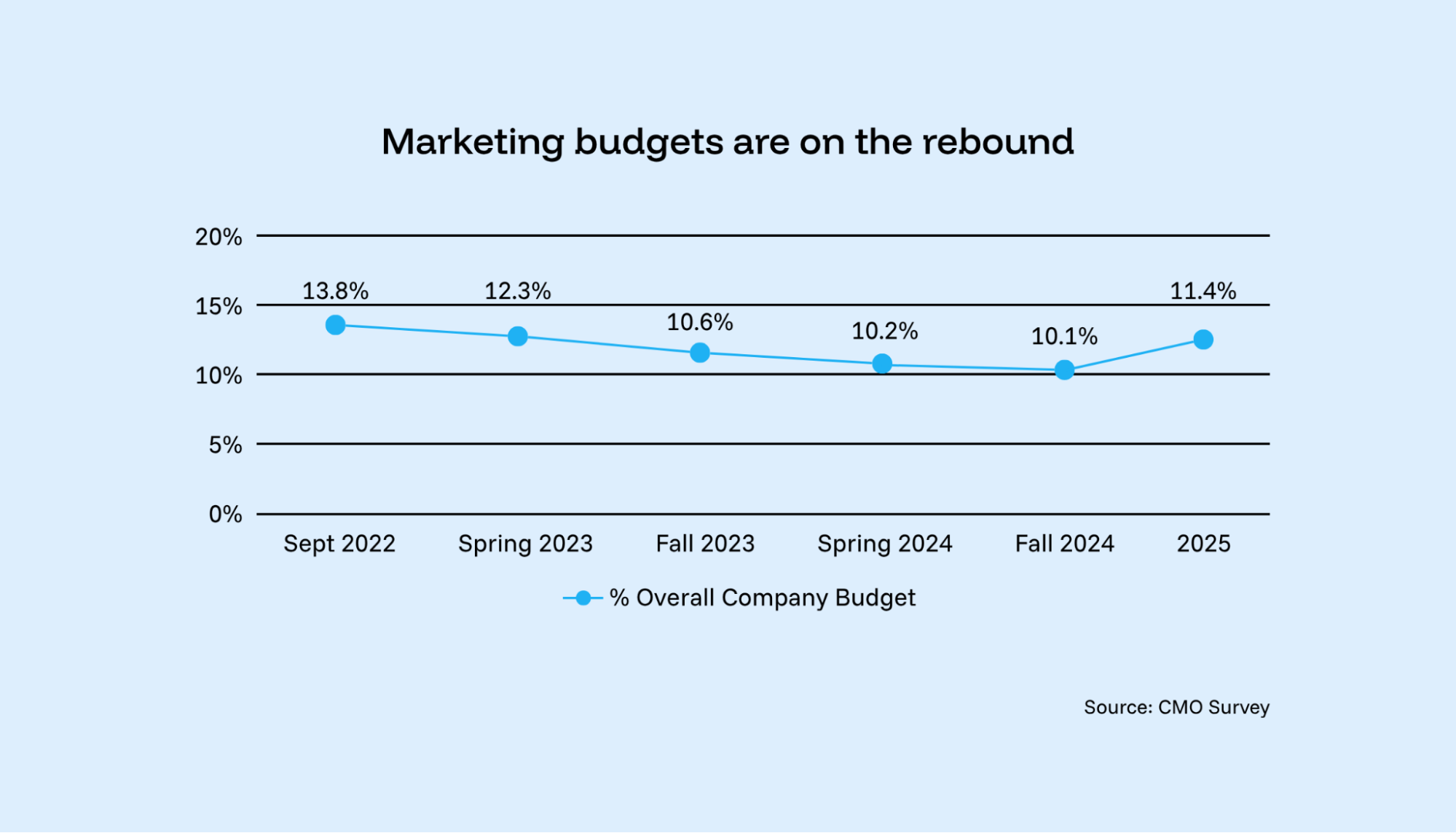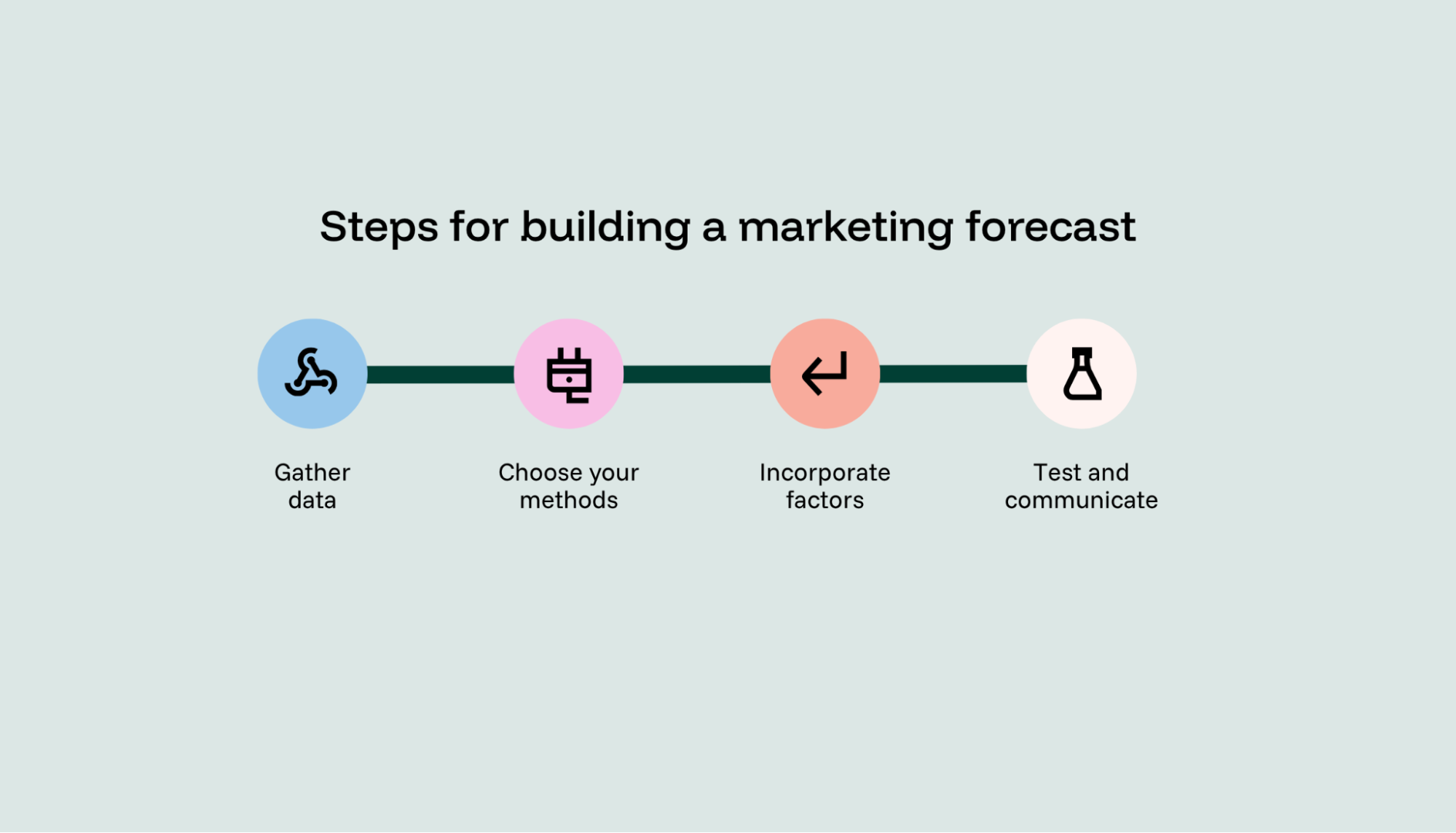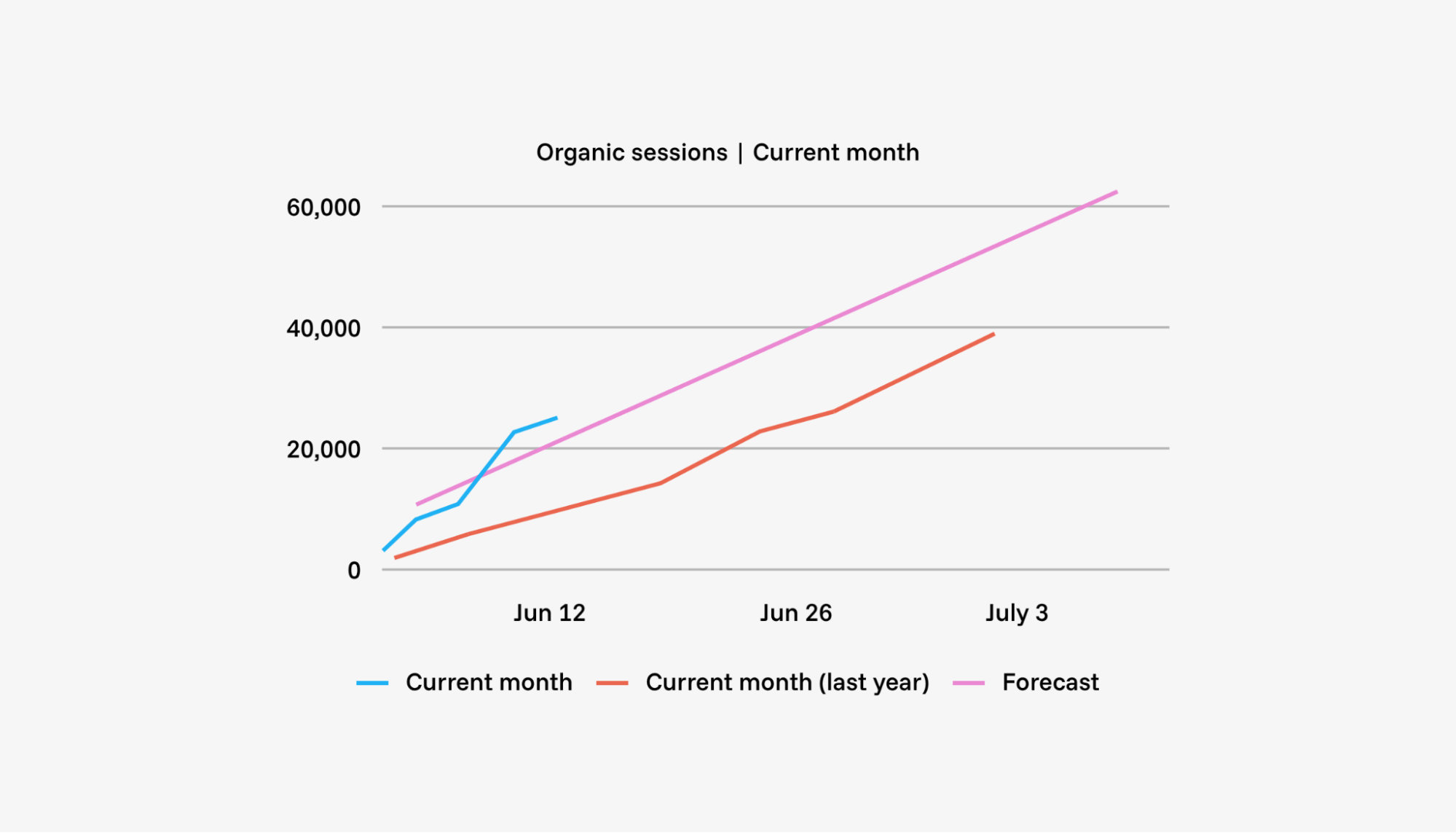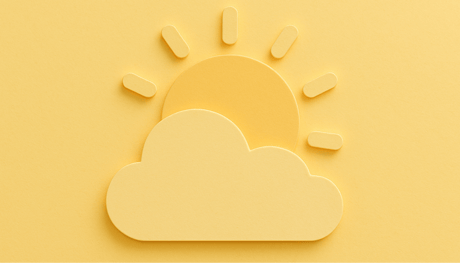-
Written by Christopher Van Mossevelde
Head of Content at Funnel, Chris has 20+ years of experience in marketing and communications.
Marketing budgets are tight, and getting an accurate view of campaign performance is often foggy at best, thanks to black-box ad algorithms and tracking restrictions. But leadership expects numbers to back every decision as if marketers could look into a crystal ball and see the future.
While having total clarity isn’t possible, marketing forecasting can help you make data-backed decisions that drive business value. Instead of guessing which channels deserve more investment or waiting for revenue to dip before reacting, forecasts provide early signals that shape strategy. They help align sales and marketing on realistic targets, protect spend from being wasted on underperforming channels and give marketing leaders the confidence to defend their budgets.
But forecasts are only as good as the data behind them. That means that, in order to build accurate forecasts in marketing, you need both the right forecasting techniques and a reliable marketing intelligence platform as your trusty foundation.
So, what can you do to forecast smarter, turn data into direction and prove impact? Let’s take a look.
What is a marketing forecast?
A marketing forecast estimates how future campaigns, budgets and marketing efforts are likely to perform within a specific market segment.
Think of your forecast as your best evidence-based guess at how well your next round of marketing will work. Instead of relying on hunches, it draws from historical sales data, past marketing campaigns, market research reports and customer surveys to project outcomes such as future sales, return on ad spend (ROAS) and customer demand.
Marketers use forecasts to:
- Estimate how many new customers they might convert
- Adjust the marketing budget based on projected performance
- Gauge the value gain of trying a new channel
For the sales team and company executives, forecasts:
- Support quarterly and annual planning
- Align sales and marketing around shared targets
- Provide a data-backed view of future performance
The challenge for most modern marketing teams isn’t forecasting itself. It’s accessing enough reliable data to prove impact.
Why marketing forecasting matters for modern teams
In 2025, the CMO Survey found that, for 64% of senior marketers, demonstrating the impact of marketing actions on financial outcomes is a major challenge. That’s a C-suite problem that affects budgets, hiring plans and long-term strategy.
Marketing budgets are rebounding right now, but slowly.

A strong forecast arms your CMO with proof in the boardroom, helping to keep support for marketing running strong. A robust marketing forecast also acts as an early warning system. It flags weak spots, surfaces risk and helps teams align before results fade.
But a lot of teams struggle to collect the clean, trustworthy data needed to build projections that teams can actually act on. That’s why using a marketing intelligence platform like Funnel to pull, transform and unify data from hundreds of channels is step one to effective forecasting. It combines marketing data unification, transformation and measurement with advanced tools for predicting future impact, giving CMOs a grounded view of forecasted performance that stands up to scrutiny in the boardroom.
Even with the best tools, you still need to take a strategic approach to forecasting. Let’s look at which forecasting methods marketers should be using and what they offer.
Key marketing forecasting methods
Different forecasting methods work better in different scenarios. Choosing the right one depends on what kind of data you have, what kind of marketing strategy you're building and where your marketing campaigns sit in the sales cycle.
Qualitative methods
Qualitative methods are best for hypothesis-building. They’re inputs for building assumptions, which you can then validate with quantitative methods.
- Customer surveys: Capture sentiment and purchase intent from a specific market segment before launching new campaigns.
- Expert opinion: Useful when entering new markets or launching products with limited historical data. Tap internal specialists or outside advisors to set early assumptions.
- Sales team input: Pull insight directly from the sales team; they’re closest to what potential customers are asking for.
Quantitative methods
Quantitative forecasting methods are what you use to produce mathematical forecasts and validate the hypotheses developed with qualitative methods.
- Trend analysis: Spot patterns like a December sales spike for gift products, or seasonal spikes or dips following specific marketing campaigns.
- Predictive analytics: Use aggregate customer data and funnel metrics to project future sales and estimate demand from specific segments.
Advanced measurement approaches to support forecasting
Measurement plays a supportive role in marketing forecasting. Measurement models like marketing mix modeling (MMM), multi-touch attribution (MTA) and incrementality explain what happened and why. From there, forecasting models take those causal insights and projects them forward. That’s how you predict what’s likely to happen next as budgets, channels and market conditions change so you can plan with confidence.
- Marketing mix modeling (MMM): Use MMM to inform smarter budget allocation decisions. Marketing mix modeling helps you see the impact of inputs, like marketing efforts and external factors like seasonality and pricing changes, on business outcomes, like sales. In forecasting, MMM is a useful tool for identifying the most impactful channels and deciding how to redistribute upcoming budgets.
- Incrementality testing: Use this method to see the incremental value of a campaign or channel. Combine incrementality with MMM and attribution to triangulate the best way to allocate marketing spend and make unbiased budget decisions.
- Model-based simulations: Powered by Funnel’s daily updated measurement models, Funnel Measurement can show you how to optimize your media plan based on metrics like marginal cost per acquisition (CPA) and ROAS.
Measurement leads to insights used for forecasting, which informs planning. Funnel’s Marketing Intelligence Platform unifies both sides of this equation: its measurement models refresh daily, providing always-on inputs that power accurate, real-time forecasts.
How to build an accurate marketing forecast step by step
Building a marketing forecast that holds up to scrutiny means more than just picking a model. It starts with good data, the right method for your use case and the ability to adjust when things shift. Here’s how teams using Funnel approach it.

Step 1: Gather historical data and market research
Start with what you already have. Export historical sales data, ad spend and lead volumes from Salesforce, HubSpot or whatever CRM and ad platforms you use. This shows how past marketing efforts actually turned into revenue.
Imagine a team pulling two years of Facebook Ads and GA4 data into Funnel. They combine it with market research reports from Nielsen, consumer surveys and third-party datasets to fill blind spots, like a competitor ramping up spend or shifting demand in a key market segment.
Instead of juggling siloed dashboards, they store all marketing data directly in Funnel, so channels can be compared side by side, and export to tools like BigQuery or Snowflake for further analysis with other types of business data.
Step 2: Choose the right forecasting technique for your goals
The right method depends on your data and decision:
- Launching in a new market? Use qualitative methods like customer surveys or feedback from your sales team to shape early expectations.
- Running established campaigns? Are your customers on YouTube more than they were a year ago? Should you allocate more spend for this channel? Use trend analysis to get an idea of future performance based on emerging trends.
- Reallocating your marketing budget? Use marketing mix modeling (MMM) or triangulation to see what’s actually driving revenue, for example, if you want to see if it’s time to pull budget from Meta and test TikTok.
- Testing a specific channel’s impact? Wondering if you should invest more in LinkedIn ads in North America? Set up incrementality testing to measure true lift.
Step 3: Incorporate multiple factors like customer behavior, funnel metrics and economic indicators
Look beyond just spend and leads. Good forecasts account for things like:
- Funnel metrics such as conversion rates, sales cycle length and churn to see if velocity is picking up or slowing down.
- Customer behavior like NPS scores or repeat purchase rate to judge loyalty and momentum.
- Economic indicators including inflation, demographic shifts or competitor moves, which often explain sudden deviations better than the model itself.
Funnel brings all of this into one place so you can compare test results from your optimization tools with historical data and model fresh data in one place.
Step 4: Test, adjust and communicate results to stakeholders
Back-test your forecast by running it against last year’s numbers. Back-testing validates the model’s accuracy. Once validated, use the model for scenario planning: adjusting spend, channel mix or macro assumptions to see projected outcomes before committing budget.
Finally, make it clear. Share forecasts in Google Sheets or Looker dashboards that highlight forecasting assumptions and scenario ranges. When company executives can see the logic, they’re more likely to trust the output and back your plan.
Real-world examples of marketing forecasts in action
Forecasting only works when it’s built on clean, connected data and tied to real decisions. That’s what Funnel delivers. Data is centralized and refreshed daily for modeling. You can use attribution, MMM, incrementality testing and AI-powered scenarios all in one platform. And you have a central command center for automatic data exports and creating dashboards to share with stakeholders.
awork, a fast-growing B2B SaaS company, needed more than last-click reports to justify a six-figure marketing budget. Using marketing mix modeling in Funnel, they discovered that paid social drove more downstream conversions than GA had shown. Reallocating 30% of spend cut acquisition costs and scaled performance fourfold.
“We could raise our bids and outbid the competition in the important placements while saving our resources on campaigns that contribute less.”
— Tobias Hagenau, Co-founder and CEO at awork.io
Deuba, a German ecommerce company, used multi-touch attribution, MMM and customer data to correct for last-click bias. Modeling marketing channels together showed that social was undervalued by 80%. Feeding insights into Google Ads bidding improved cost per acquisition and ROI.
“Partnering with Funnel has truly revolutionized our marketing approach. Transitioning from a last-click attribution model to a holistic measurement approach, which now includes display and social ad impressions, has given us the power to accurately measure the real ROI of every marketing move. Armed with this newfound clarity, we're making informed decisions and driving targeted growth.”
— Mark Prediger, Head of Online Shops and Marketing at Deuba
With Funnel’s unified data hub and always-on models, these teams forecast confidently, adjust faster and put their marketing dollars where they work best.
The future of marketing forecasting
Marketing forecasting is helping to drive smarter decisions, more effective marketing plans and optimized budgets by sharpening hypothetical scenarios with solid insights. As third-party cookies disappear, marketers will lean more on advanced measurement methods like marketing mix modeling and incrementality testing to create more accurate forecasts that inform better planning.
And with black-box ad algorithms, having a marketing intelligence platform that connects directly to ad platforms through Conversion APIs for server-side tracking is a game-changer. Funnel does just that. It replaces lagging reports with always-on models that update automatically as new marketing data comes in. This gives teams a faster read on performance and reduces wasted marketing dollars.
Forecasts are becoming part of the day-to-day. Instead of living in quarterly reports, they’ll be integrated into campaign dashboards, helping marketers spot shifts in customer behavior, adjust spend and act before performance drops.

Funnel’s edge is in pairing AI with unified data to project marginal ROAS, flag anomalies and guide smarter budget decisions fast. The future of forecasting is not about crunching more numbers. It’s about reacting faster and reallocating spend with confidence.
How Funnel helps marketers forecast with confidence
Funnel is the Marketing Intelligence Platform built for marketers who need clean, unified data they can trust across clients, platforms and campaigns.
Here’s why teams choose Funnel:
- 500+ always-maintained connectors for everything from Meta to Shopify
- Unlimited data retention, so you can compare future performance to historical sales data
- Automatic standardization of currencies, UTM values and date formats
- No-code modeling tools to apply forecasting techniques like marketing mix modeling, incrementality testing and triangulation without data prep
- Client-ready dashboards that help agencies and stakeholders align faster
Funnel replaces spreadsheets, fragmented data and guesswork with a centralized platform that helps marketers detect channel shifts and adjust faster and with more confidence. Get the data foundation you need to build projections you can trust.
-
Written by Christopher Van Mossevelde
Head of Content at Funnel, Chris has 20+ years of experience in marketing and communications.
